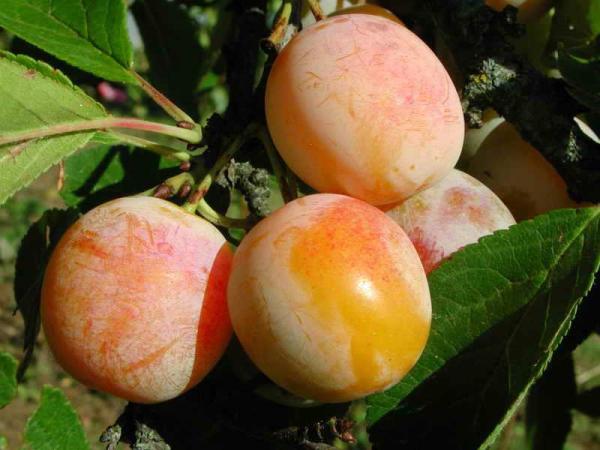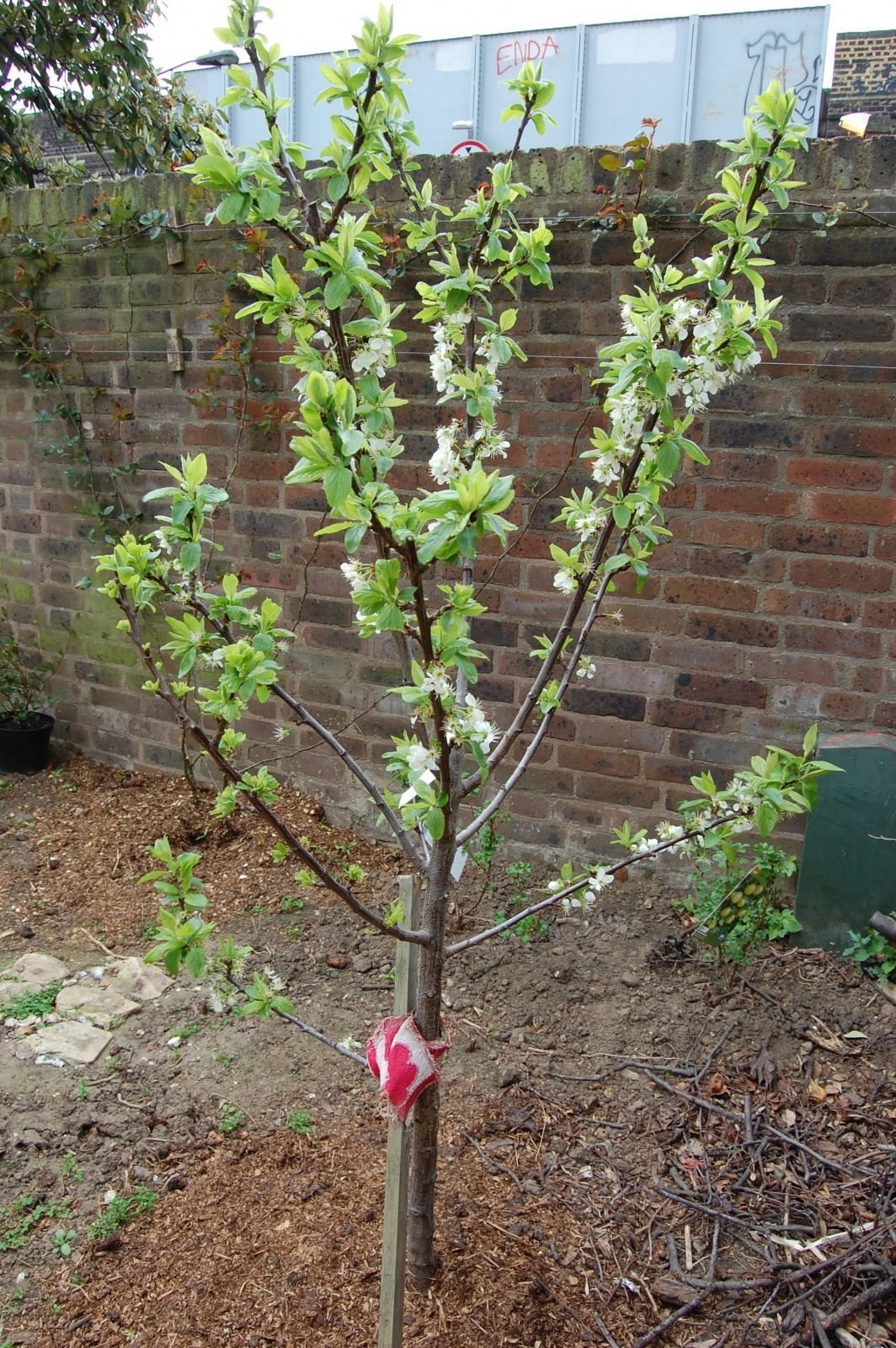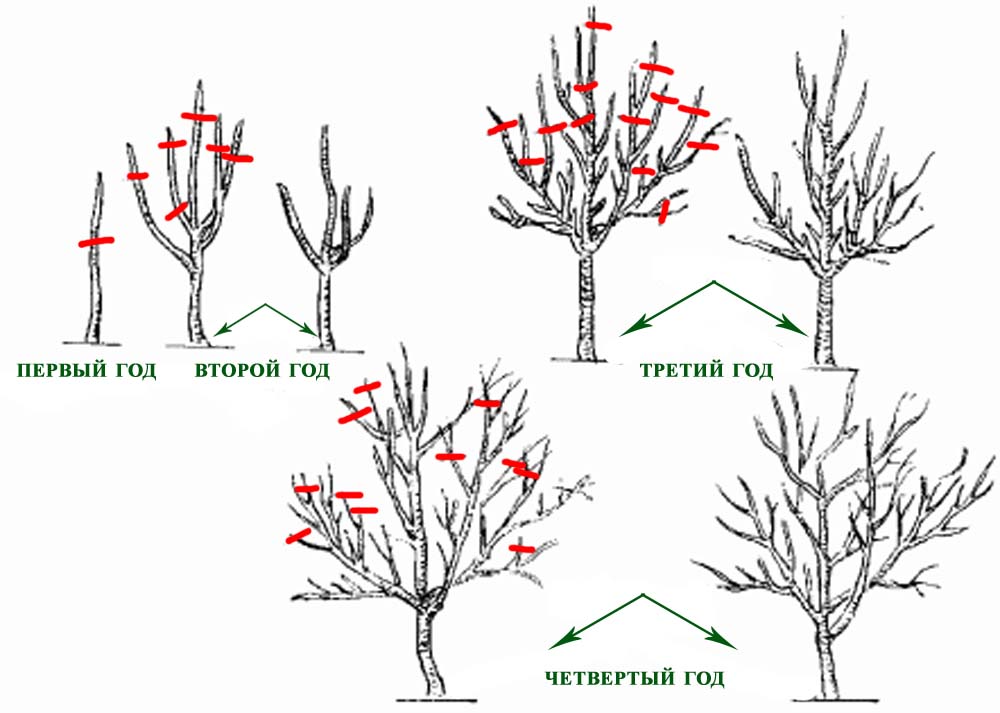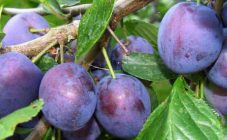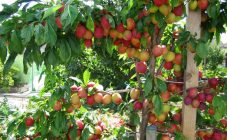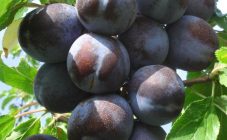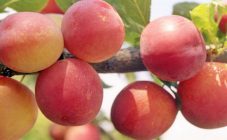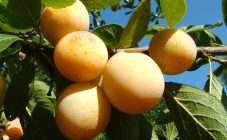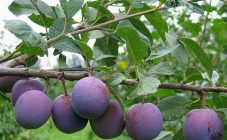Content:
The well-known variety of fruit trees Yakhontovaya plum appeared on the domestic market as a result of a long research work of Russian breeders. The specialists operated under the auspices of the All-Russian Institute, based in the city of Moscow. A new type of plum was obtained by crossing two well-known crops, namely: Eurasia 21 plus Smolinka.
This plum hybrid was intended specifically for growing in conditions typical for central Russia. But it turned out that in a harsh climate, in the first years of the growing season, it requires additional insulation during wintering.
This variety of insufficiently frost-resistant culture is distinguished by enviable drought resistance (provided that the care of plum trees is properly organized). Their fruiting is possible only in the third or fourth year after planting young seedlings. During the growing season, the flower buds of the plant practically do not suffer even from rather severe spring frosts.
In addition, the owners of this culture can be proud of its good immunity to the vast majority of garden diseases and garden pests. After the beginning of fruiting, the plum produces an annual crop, which is usually harvested at the end of the month of August. The success of the growing season and the volume of yield of this crop largely depend on the place of planting and compliance with the rules of care.
Description and characteristics
The complete characteristic of the plant itself and its fruits can be presented in the form of a description of the characteristics of the variety, including its specific features:
- Plum trees Yakhontova, with a description of the variety which can be found in this section, are very much elongated in height (it can reach about 5.5 meters).
- Their crown is quite neat, with a characteristic roundness, and the branches and foliage forming it can be characterized as having an average degree of thickening.
- During the season, up to 45-50 kilograms of tasty and juicy fruits can be removed from one plum tree.
By the time of full ripening and harvesting, the plum fruit takes on a pleasant golden yellow color with a slight dilution of a dotted blush. His skin is very thin; the weight of a single specimen is approximately 25-35 grams.
Another feature of this species is the need for planting nearby other varieties, through which pollination of peduncles is carried out.
Regarding the appearance of the fruits of the Yakhontovaya variety, it should be said that their shape is correct (rounded-elongated). At the same time, the flesh of the plum is usually yellowish-golden and very juicy, reminiscent of a sweet dessert with a sour aftertaste.
Features of vegetation and care
This type of plum can multiply by grafting (budding), which is usually carried out in spring or summer. But the simplest and most accessible method of reproduction for all gardeners involves the use of cuttings (seedlings) cut from an adult tree for this. If the maternal sample is not available, planting material can be purchased from gardening neighbors or in nurseries where it is prepared specifically for sale.
Disembarkation
Planting of this fruit variety is usually carried out in the very early spring (at the moment when it becomes possible for the juices to move along the roots and trunk of the seedling). A place for planting young cuttings is selected on a well-lit and not flooded side of the garden plot. Previously, all accumulated household waste, as well as old grass and weeds are removed from it, after which the earth is carefully dug up.
To plant the cuttings, you will need to dig small pits (their width and depth are chosen the same - about half a meter).
After the pit is ready, the stalk is fixed in the center of the pit, and then sprinkled with a mixture consisting of the following components:
- Mineral fertilizers.
- Organic.
- Selected turf.
The earthen soil formed in layers is carefully rammed during planting, which allows protecting the plant roots from falling into possible voids. In this case, the root collar of the seedling itself remains above the surface with a margin of about 5 centimeters. At the end of the landing, at least two buckets of well-settled water are poured onto the near-stem circle.
Further, to preserve the accumulated moisture, the earth inside it is mulched with peat (sawdust or humus can also be used for this). In order to strengthen the position of the seedling, as well as to protect it from the wind from the north side, it is tied to a peg-support.
Young plant care
Maintenance and care of this variety usually comes down to performing a number of mandatory procedures:
- Systematic weeding.
- Regular watering of the near-stem circle.
- Loosening of the soil and periodic feeding.
Weeding is organized as needed, and the frequency of watering depends on the condition of the soil (it should not dry out too much). Usually one plentiful watering, organized every 2-3 weeks, is enough.
At the end of watering the plant, the best time for which is morning, overgrown weeds should be removed, after which thorough loosening and additional mulching are performed. During the ripening of plum fruits, the soil under it must not be allowed to dry out too much.
Soil maintenance is reduced to an annual check for acidity. If this indicator is found to be exceeded, ash or dolomite flour is added to the ground under the seedling. Already in the second year of the growing season of the plum tree, nitrogen and potassium-phosphorus fertilizers are added seasonally to the soil once. In the first spring time, 30 grams of urea is added to it (per unit area). In addition, each time before harvesting, two buckets of well-rotted manure are placed there.
In order to facilitate the daily care of the growing trees, after about a year they are pruned and the crown is formed, no more than forty centimeters high. Moreover, no more than 6-7 small branches are left for volumetric growth. Subsequently, a regular (annual) thinning of young shoots of the future tree is carried out.
The formation of the crown in the form of a glass should be continued until the beginning of fruiting, then it completely stops. After that, only its sanitization (trimming) is carried out. In addition, when caring for a tree in the first season after planting for the winter, the plum trunk is reliably covered (fallen leaves, humus or peat are poured onto it).
In order to protect the seedling from garden pests, it will be necessary to organize preventive spraying using chemicals. Bordeaux liquid is used to prevent a number of diseases. To always have a third-party pollinator at hand, varieties are most often planted next to a plum of this species: Pamyat Timiryazeva, Vengerka, Moscow Skorospelka.
Advantages and disadvantages
The indisputable advantages of this variety include:
- The possibility of breeding and growing in almost any region of Russia.
- Excellent taste.
- Ease of caring for growing young shoots.
- Good immunity to most types of garden diseases.
The only serious drawback of this type of plum crop is its low frost resistance. It should also be reminded of the need for third-party pollination, the issue with which is usually resolved in a working order.
At the end of this review, we note that, given the above advantages of the Yakhontovaya plum, a modern summer resident is unlikely to refuse to breed this species in his personal plot. Thanks to him, you can realize your dreams of enjoying the sweet plum fruits of your own production.
